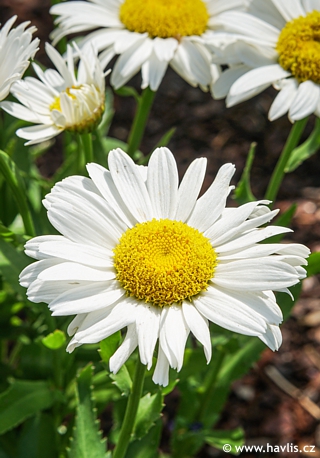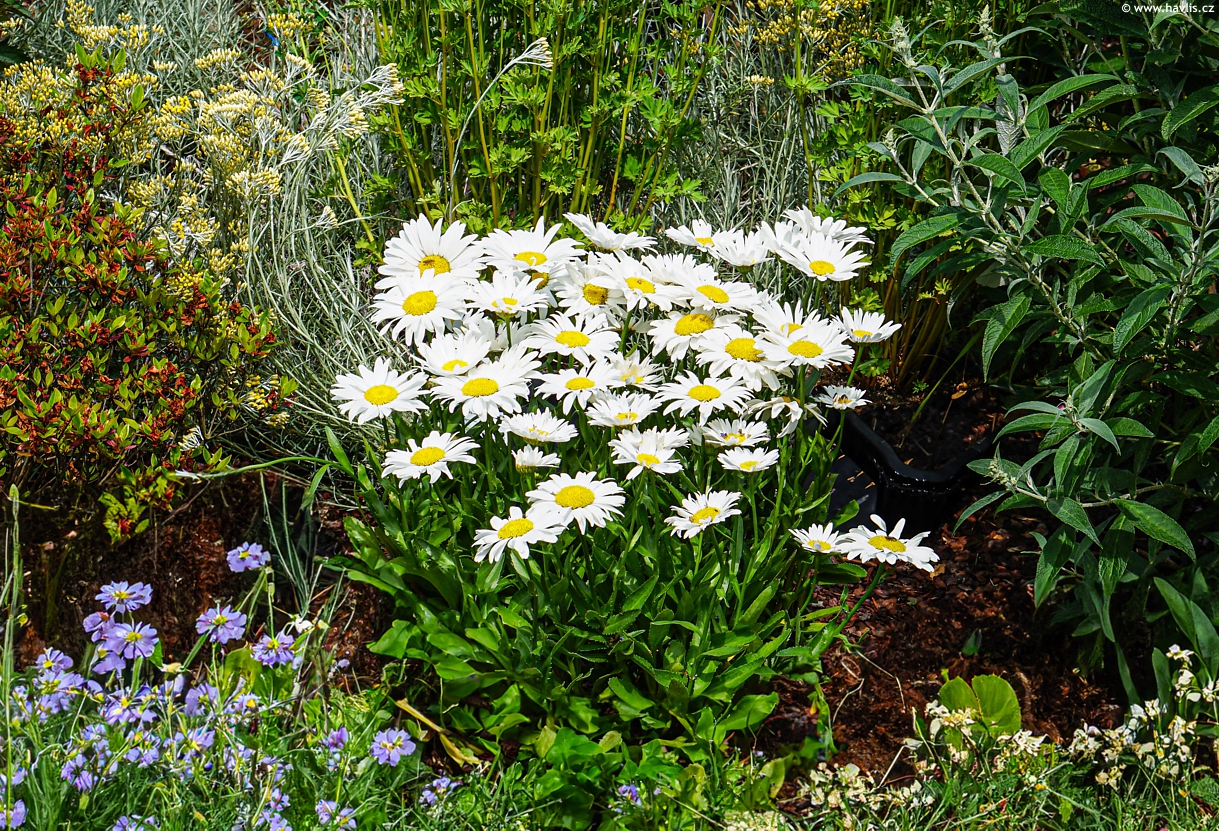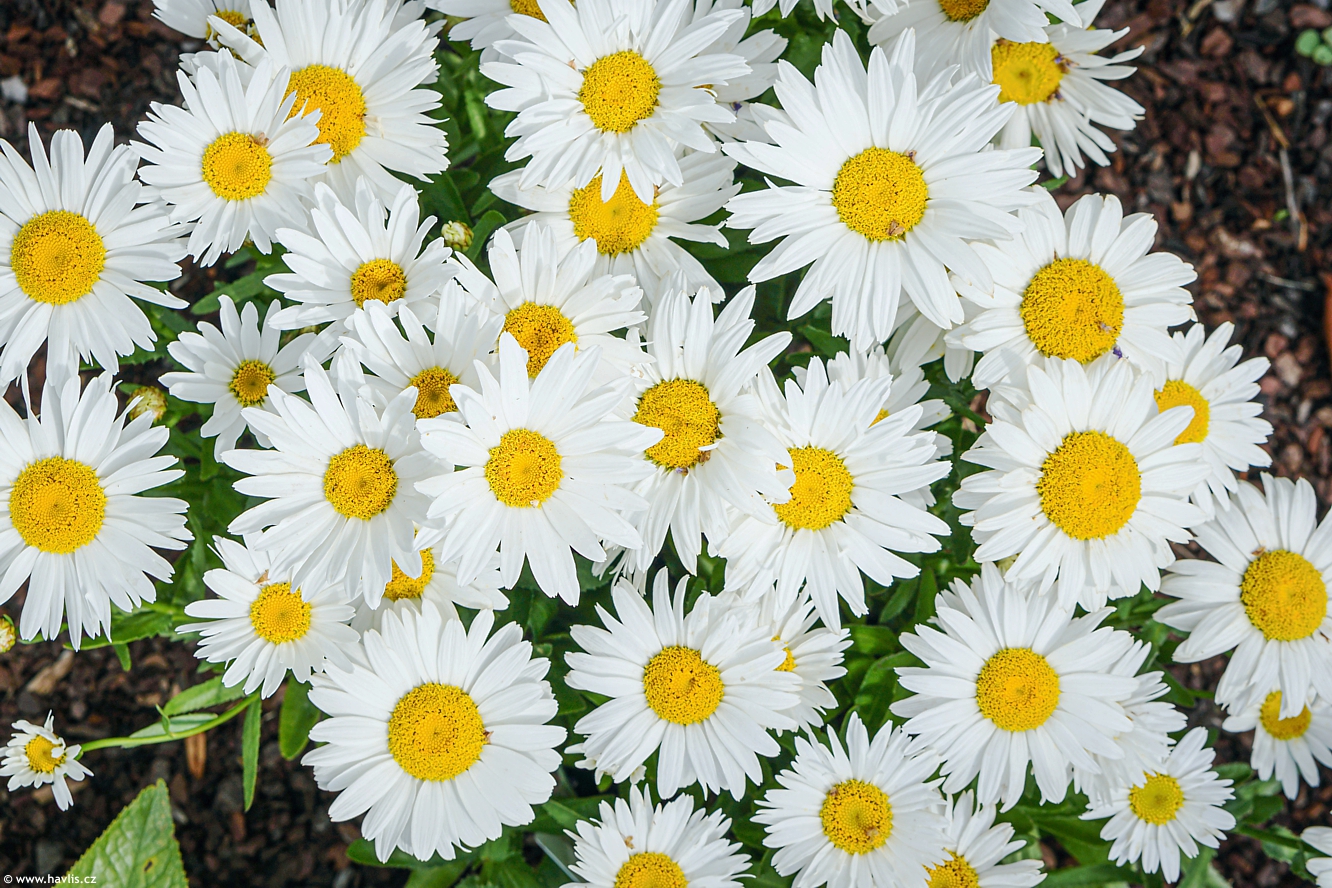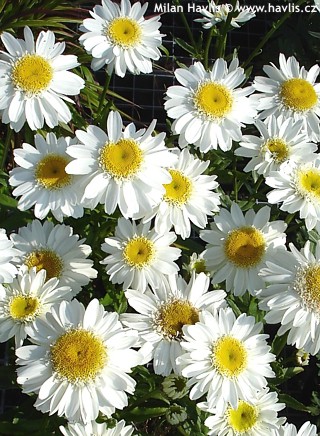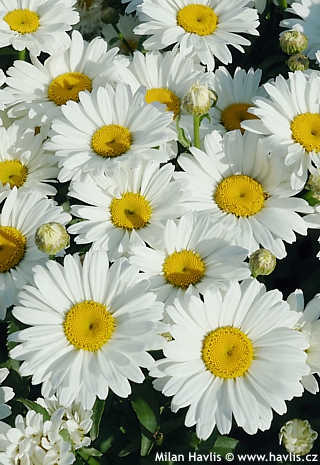Leucanthemum 'MADONNA' Shasta daisy
size/type
low perennial,low perennial
usual height
0,2-0,4m
usual width
0,3-0,4m
leaves
deciduous broadleaf
colour of leaves
flowers
showy
colour of flowers
blooming time
June-September
location
full sun
soil type
any (acidic to alkaline)
soil moisture requirements
evenly moist but well-drained
USDA zone (lowest)
5 (down to -29°C)
winter protection
for zone 5+6

for zone 7

categorized
Leucanthemum
Shasta daisy is a hybrid daisy which originated by crossing l. lacustre and l. maximum and was created by Luther Burbank in 1890. It’s alternative name l. x superbum is accepted but not used very often anymore. Shasta daisy is a large-flowered version of a common daisy which is an omnipresent plant perennial of Czech meadows and cottage gardens. It is elegant and gentle and thanks to modern breeding you can enjoy this handsome flower in several varieties offering shorter stems and repeat blooming. It was named after Mount Shasta for its (usually but not always) snow-white flowers which recall snow caps of its top.Description of the plant:
Madonna is another gorgeous Shasta daisy variety, this time developed by PanAmerican Seeds and introduced in 2018. It makes uniform plants with upright stems about 30 cm in height and the plant is not much wider that its height. Flowers are large, 7-9 cm across, ray florets and pure white and central discs are bright yellow. Individual flowers excel in longevity (3-4 weeks) and commonly appear from June. While they bloom atop the tall stems, new buds are formed in their lower parts. Deadheading and feeding will encourage formation of more flower buds until September. Leaves are deep green and glossy, narrowly lance-shaped, distinctively serrated. Madonna Shasta daisy was awarded Gold Medal by Fleuroselect.
Shasta daisy is widely soil adaptable provided the soil is evenly moist but well-drained. Just make sure the crown of plant is just above the soil level, never deeper. For best results we recommend growing it in humus-rich soil where the number of flowers and overall plant appearance will be better. It is commonly disease resistant but slugs become a problem when they find it since they love it - both flowers and foliage. Make sure they stay away from this beauty, otherwise they can eat the entire plant leaving bare stems in the bed. Fully hardy to min. -30 °C (USDA zone 5).
Last update 05-07-2023
QUICK PRICE OVERVIEW
CURRENTLY SOLD OUT
WANT TO TRY A SIMILAR PLANT?












